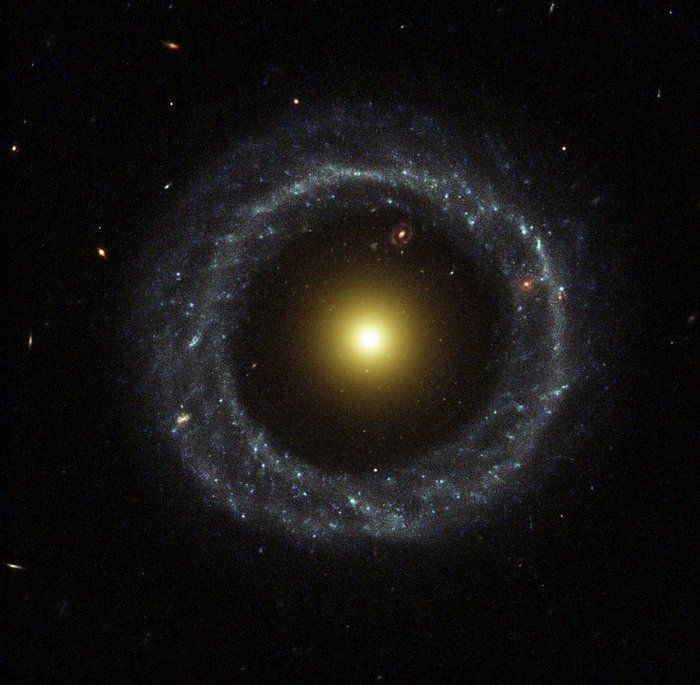Check Out This Unusual Ring Galaxy That Has Baffled NASA

The Hubble Space Telescope was able to capture a photo of an odd galaxy that has baffled NASA. According to the agency, the ring-shaped galaxy’s formation still remains a mystery.
The cosmic structure spotted by NASA and the European Space Agency’s (ESA) space telescope was identified as Hoag’s Object. It was named after American astronomer Arthur Hoag who discovered it in 1950. It lies within the Serpens constellation and is about 600 million light-years from Earth’s neighborhood.
Unlike most galaxies such as the Milky Way, Hoag’s Object does not have a distinct spiral shape. Instead, it has an almost perfect ring-shaped structure. According to the ESA, the galaxy’s ring is filled with clusters of blue young stars. This ring is formed perfectly around a bright yellow center, which is most likely populated by older stars. The distance between the outer ring and the bright nucleus is estimated to be about 70,000 light-years.
“The entire galaxy is about 120, 000 light-years wide, which is slightly larger than our Milky Way Galaxy,” the ESA explained. “The blue ring, which is dominated by clusters of young, massive stars, contrasts sharply with the yellow nucleus of mostly older stars. What appears to be a 'gap' separating the two stellar populations may actually contain some star clusters that are almost too faint to see.”
Since Hoag’s Object doesn’t resemble most known galaxies, NASA admitted that it is not sure how the massive cosmic structure was formed. One theory suggests that a small galaxy traveling at high speeds collided with a much larger one billions of years ago.
“How Hoag's Object formed remains unknown, although similar objects have been identified and collectively labeled as a form of ring galaxy,” NASA stated. “Genesis hypotheses include a galaxy collision billions of years ago and the gravitational effect of a central bar that has since vanished.”
Although this seems like a likely explanation for the formation of Hoag’s Object, the galaxy’s surroundings do not show traces of a previous collision and merger. In addition, if a collision did occur, the galaxy’s center would have a very different shape.
© Copyright IBTimes 2024. All rights reserved.





















